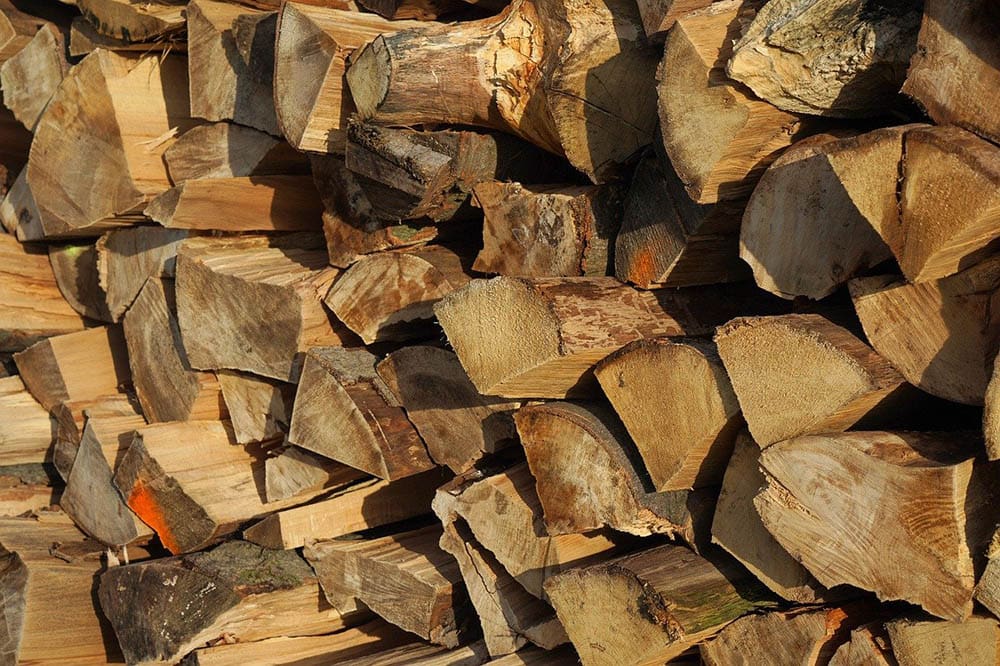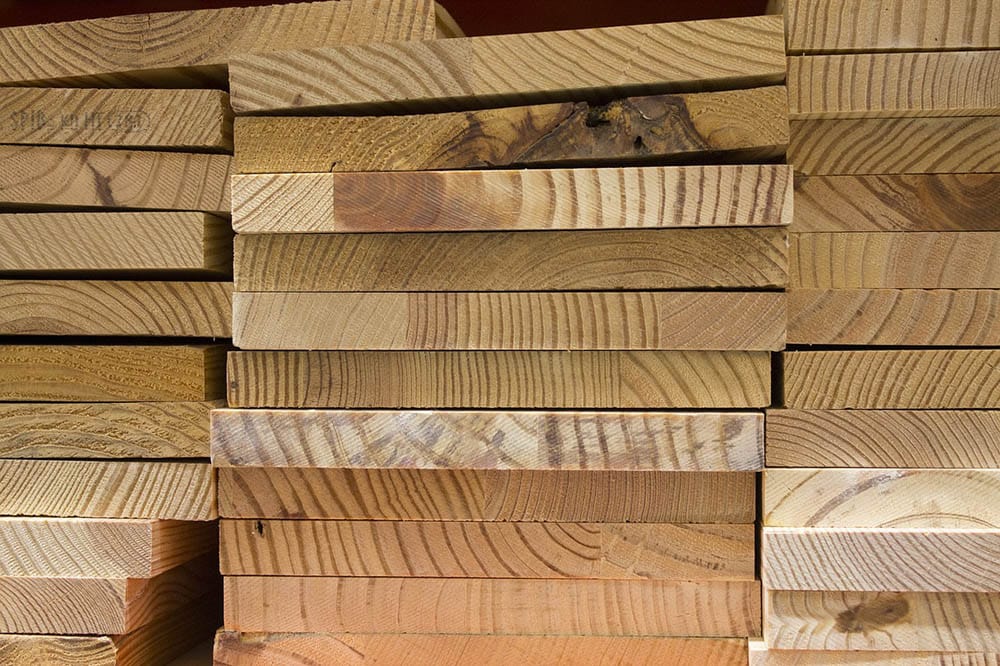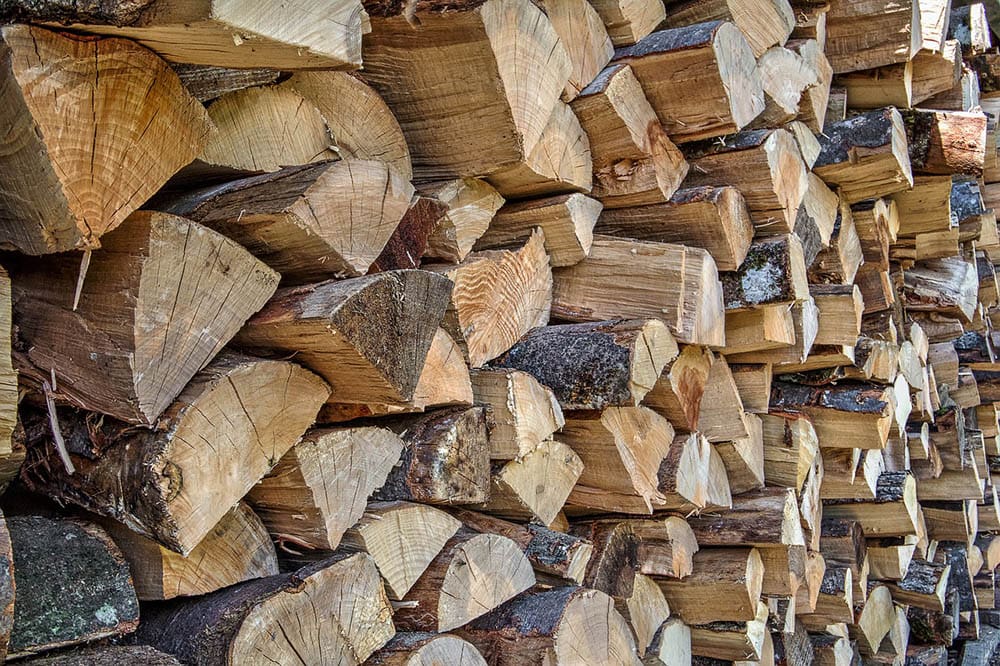How to Dry Wood Fast: 5 Effective Methods
-
- Last updated:

If you’re trying to complete woodwork, wet wood is the bane of your existence. You don’t want to work with wet wood if you want decent results, but it can take days for wood to dry out completely.
It’s a frustrating situation to be in, so here are a few helpful tips on how to speed up the drying process for wood. These are five different methods to consider depending on the equipment that you have available and the size of the wood that you need to dry.

The 5 Methods to Dry Wood Fast
1. Air Drying

| Size of Wood: | Any |
| Ease of Completion: | Easy |
| Drying Time: | Slow |
The most common method of drying out wood is to let it air dry, but the exact speed of this process comes down to different environmental conditions. Still, there’s a reason that this is the most common option.
All you need to do is put the wood in a covered area out outdoors, but ensure that it has adequate airflow. Then, just let the wood dry out over time. Keep in mind that it will match the moisture content in the air, so in very humid environments, you might not get the results that you want.
But the wood itself stays easy to work with and keeps all its natural vibrant colors, which is a huge perk for the final project.
- Easy to complete
- Great for large pieces of wood
- Easy to work with
- Keeps natural and vibrant colors
- Takes a long time
- Can’t get to very low moisture content
- Potential for wood degradation
2. Shed Drying
| Size of Wood: | Any |
| Ease of Completion: | Easy |
| Drying Time: | Medium |
If you have a wood drying shed or can get access to one, this might be the best possible way to dry wood. Typically, these sheds have some sort of fire or heat source in them to help keep up the temperature, but it’s still important that there’s plenty of airflow.
This means putting fans in the shed or something similar to keep air moving while the wood dries. You’re still limited to the moisture content in the air, but the wood does keep its natural and vibrant colors, and it’s faster than air drying.
- High-quality final product
- Low final moisture content
- Faster than air drying
- Keeps natural and vibrant colors
- Expensive
- Not always available
3. Kiln Drying

| Size of Wood: | Any |
| Ease of Completion: | Challenging |
| Drying Time: | Fast |
This is the way that professionals dry their wood. Kiln drying heats the wood to an extremely high temperature so the water content evaporates out of it.
With kiln drying, the weather conditions don’t matter, and you can get an extremely low final moisture content in the wood. It’s a fast and controlled way of wood drying, and this is why it’s so popular with the pros.
However, kiln-dried wood does have its drawbacks. First, it’s generally not as bright and vibrant as air- or shed-dried wood. Second, it’s far more fragile. Also, the initial setup for a kiln is extremely expensive and it’s often not available for amateurs or DIYers.
- Quick wood drying
- Ultimate control
- Very low final moisture content
- Weather conditions don’t matter
- Expensive setup
- Not always available
- Wood loses color
- Produces fragile wood
4. Microwave
| Size of Wood: | Very small |
| Ease of Completion: | Easy |
| Drying Time: | Fast |
If you’re working at home and only need an extremely small amount of wood, you might be able to microwave it to dry it.
However, this is quite a process. You start by weighing the wood and getting the starting moisture content with a moisture meter. From there, you microwave the wood: Put in a few paper towels and then your wood pieces. Never let wood pieces touch each other in the microwave.
From there, you proceed depending on the starting moisture content of the wood. For wood at 15% to 25% moisture, microwave for 45 to 60 seconds on the lowest setting. If you see smoke, stop right away.
If the moisture content is over 30%, use the defrost setting and microwave the wood for 1.5 to 3 minutes.
Weight the samples after the first round of heating, and proceed using the two previous methods depending on the current moisture content. When the moisture content is below 15%, shorten the microwave time.
- Fast option
- Easy to complete
- You get to control the final result
- Vibrant final color
- Only works for small pieces of wood
5. Oven
| Size of Wood: | Small |
| Ease of Completion: | Easy |
| Drying Time: | Fast |
If you have slightly large pieces of wood and they won’t fit in a microwave, consider the oven method. This still won’t work for very big pieces, but for medium-sized wood, it’s a great choice.
Preheat the oven to around 215 degrees Fahrenheit. From there, turn the fan on to increase airflow. Place the wood on the center rack, and let them sit there for an hour, monitoring the oven every 10 to 15 minutes. When setting the wood on the rack, ensure that none of the pieces touch each other.
Test the moisture content after an hour with the moisture meter, and heat in 15-minute increments until you get to the desired moisture content.
- Fast drying option
- Easy to complete
- You get to control the final result
- More pieces can fit in an oven than in a microwave
- Only works for medium-sized pieces of wood
- Can drain the wood of color

Conclusion
Now that you know more about your options to speed up the process of drying wet wood, it’s up to you to figure out which method is best for your situation. When all else fails, just try to find a dry place to store the wood that has plenty of airflow.
It might take longer than you want, but it’s better than trying to work with wet wood and not getting the final results that you want for your project.
Featured Image Credit: Andreas Lischka, Pixabay
Contents

